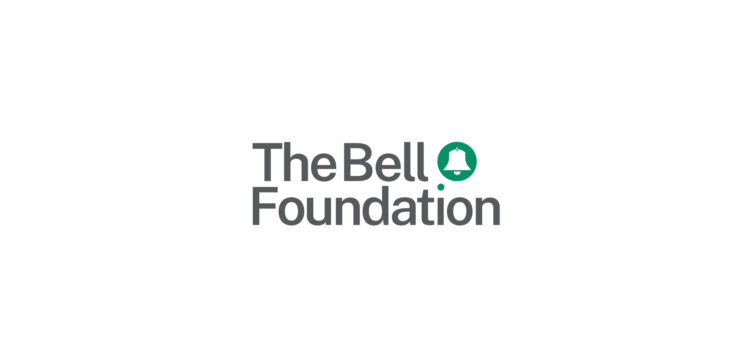Intervention Groups: Supporting Secondary EAL Learners Beyond the Classroom (Webinar)
- Date
- 16 May 2024
- Time
- 4:00pm
- Price
- Free
- Type
- Webinar
Explore our policy recommendations for breaking down language barriers
in schools, adult education, and the criminal justice system.

Bilingual dictionaries, including online bilingual dictionaries and translation software, are specialist dictionaries that can be used to translate from one language to another.
The best bilingual dictionaries give examples of the word in context rather than just synonyms. For example, the word abîme in a French-English dictionary might just give a couple of words with the same meaning in English: abyss, gulf. A more useful dictionary will give some sentences in both languages to exemplify how it might be used: l’abîme qui nous sépare = the gulf or chasm between us, être au fond de l’abîme = to be in the depths of despair.
Bilingual dictionaries and translation software can also be useful tools for teachers when used for short simple sentences which are as unambiguous as possible. Software such as Google translate does not cope well with, for example, technical subject-specific language or literary texts.
Bilingual dictionaries are particularly useful for learners with good literacy skills in their first language. EAL learners can be at any stage of English language proficiency, as long as they are able to decode English script. If the written form of their first language is the same as or similar to English, e.g. French, Polish, they will be able to use a dictionary at an earlier stage than learners whose first language is, for example, Arabic or Chinese. They can be used across the curriculum for a range of activities, for example:
1. Looking up key words:
Give EAL learners a text in English and ask them to highlight or underline unfamiliar words in it. Ask them to first try and guess the meaning of the new words from the context. Then the learners look them up and checks whether they managed to guess their meanings correctly.
This is a useful approach with chapter or scene summaries of set texts in English; there are a number of these on this website, for example A Christmas Carol part 1 and Macbeth Act 1.
2. Use of bilingual dictionaries in external exams:
Check the rules for using bilingual dictionaries during external exams, as these vary and are subject to change. Learners need to be accustomed to using dictionaries efficiently in order to benefit from this. Make sure that there is evidence of the date of the EAL learner’s first entry to the UK as this may be needed in order to apply for them to use a dictionary in an exam.
Bilingual dictionaries and translation software are excellent language learning tools, if used properly, and it is worth devoting time and energy to ensuring that learners are supported to build up their skills to use them as part of normal lessons. It is advisable, for example, to:
Top tip: Teach EAL learners to use bilingual dictionaries and translation software intelligently, by thinking about the context and whether the translated word makes sense in that context.
The effective use of bilingual dictionaries will enhance EAL learners’ bilingual competency, helping them to make links between English and their first language and to build on their prior knowledge as suggested by the work of Jim Cummins, e.g. his Threshold Theory (Cummins 2001) and Dual Iceberg model (Cummins 2000). The principle of building on the learner’s prior knowledge is a key aspect of EAL good practice (NALDIC 1999).
There is substantial research about the cognitive benefits of bilingualism, for example Colin Baker, Bialystok et al 2012. More recent research on translanguaging by, for example, Ofelia Garcia and Li Wei, has suggested that allowing EAL learners to use their full linguistic repertoire for learning empowers them and helps them to reach their full potential. The importance of a positive attitude to multilingualism has been suggested by various researchers and activist for a long time. For example, Skutnabb-Kangas (1984) coined the term ‘linguistic human rights’ and challenged what she saw as ‘linguicism’. Levy et al (2014) suggested that learners whose first language is seen as low status in schools feel less included. Conteh (2015) reinforces the idea that valuing multilingualism in schools promotes success for EAL learners.
Bialystok, E., Craik, F. I., Luk, G. 2012, Bilingualism: consequences for mind and brain, Trends in Cognitive Science 16, 240-250.
Conteh, J., 2015, The EAL Teaching Book: promoting success for multilingual learners (2nd edition), London: Sage.
Cummins, J. 2000, Language, Power and Pedagogy: bilingual children in the crossfire, Clevedon: Multilingual Matters.
Cummins, J. 2001, Negotiating identities: education for empowerment in a diverse society (2nd edition), Ontario CA.: California Association for Bilingual Education.
Levy, T., Little, S., Clough, P., Nutbrown, C., Bishop, J., Lamb, T. and Yamada-Rice, D., 2014, Attitudes to Reading and Writing and their Links with Social Mobility 1914-2014: An evidence review, Sheffield.
NALDIC, 1999, The distinctiveness of English as an Additional Language: a cross-curricular discipline, National Association of Language Development in the Curriculum, Working Paper 5.
Skutnabb-Kangas, T., 1984, Bilingualism or not: the education of minorities. Clevedon, Avon: Multilingual Matters.